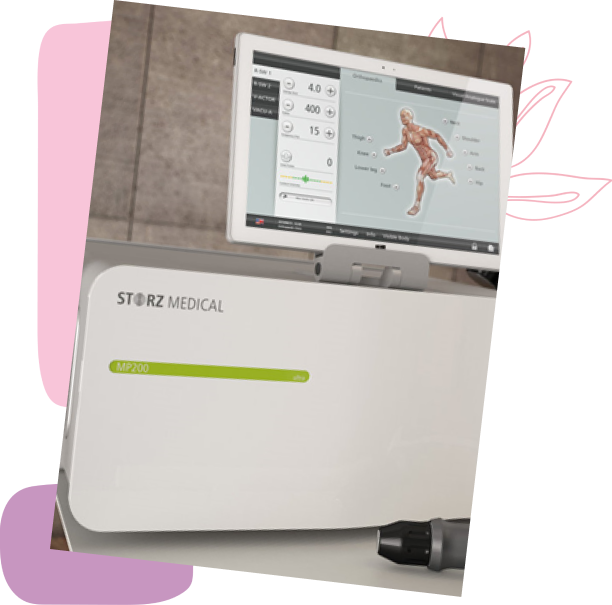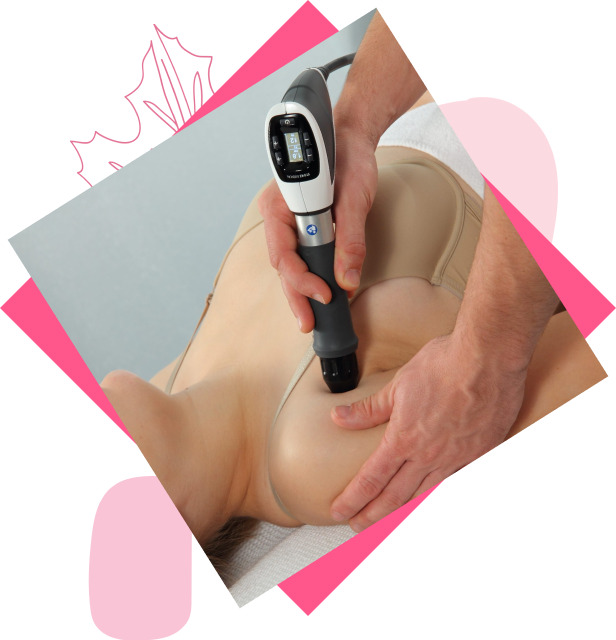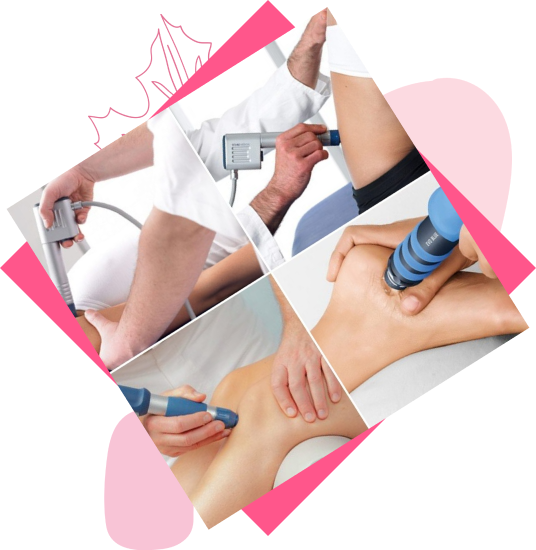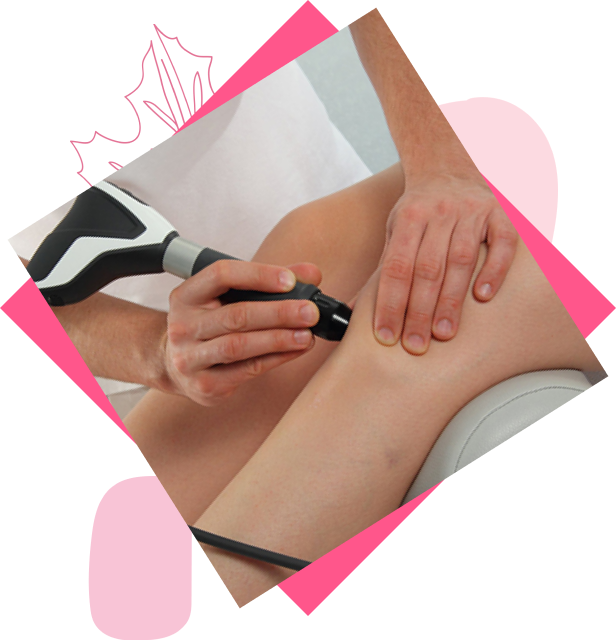

Shockwave Therapy, or Extracorporeal Shockwave Therapy (ESWT), is a non-invasive technology that delivers sound waves to afflicted areas of the body and aids recovery. Shockwave Therapy is no longer the preserve of the sporting elite! It has become widely accepted in clinical practice for the treatment of chronic soft tissue injuries. Results for treating chronic tendinopathies and chronic muscle injuries are seen through improved range of movement and reduction of pain.
Shockwave Therapy uses a patented technology to generate acoustic shock waves of pressure that can be applied to various injuries and ailments to trigger the body’s natural healing processes. Several clinical studies have shown Shockwave Therapy can provide the following benefits:
New blood vessel formation, Reversal of chronic inflammation, Stimulation of collagen and cell production, Breaking down calcium build-up, Pain reduction, and erectile dysfunction. Treatment is painless.
Long story short – Shockwave therapy was first created in the 1970’s and was initially used as a treatment method for kidney stones. Using this method meant more and more people were avoiding the need for a painful, invasive surgery, and the same goes for musculo-skeletal conditions today.
Shockwave Therapy is clinically proven, recognized by the top orthopedic hospitals and used by high profile professional sports bodies such as the English Institute of Sport, UK Athletics, Welsh Rugby Union and many Premiere League football clubs.
Shock waves are high-energy, audible sound waves. In medicine, shock waves have been used since 1980 among other things for the dissolution of kidney stones. In rehabilitation therapy, shockwaves are transmitted to the area to accelerate healing. SHOCKWAVE THERAPY (ESWT) involves passing short, intense sound waves into affected tissues, which increases blood flow, has an analgesic effect and stimulates repair and regeneration. The treatment puts the cells into repair mode and allows your body to restart its own accelerated healing process.
Yes. It has NICE guidance and FDA approval for a large number of indications. shockwave Therapy performed by qualified therapists is a largely risk-free and side-effect-free method of treating musculo-skeletal conditions and chronic pain.


Common treatments are as follows but are not limited to:
Even if there is no pain, we recommend that patients refrain from intensive activities that stress the treated area for the next 48 hours after each treatment. We advise not to use ice or anti-inflammatory medicines after shockwave therapy as these will be counterproductive to the treatment, which encourages the body’s own natural healing process.
Usually, the initial response to shockwave therapy treatment is good however it may take a few months before maximum effect is achieved. If pain is still persistent then surgery may be an option.

The treatment lasts between 10 and 15 minutes, depending on the condition. On average, three to six sessions are required. You will require a full assessment to determine the number of treatments you will need.
It depends on the conditions treated. Statistics show over 90 percent of patients experience a reduction in their pain. In patients that suffer from plantar fasciitis and heel pain related problems, pain reduction is remarkable 39 studies showed a success rate of 94% in Plantar Faciitis. The overall success rates for all indications ranges between 60% to 80% depending on the conditions treated,. Read about the Shockwave therapy Success Stories from real patients with a variety of conditions.
It can treat both long term chronic conditions and newer acute injuries, there is a great deal of evidence to show that Shockwave can achieve great results even with historical conditions.
Costs vary from clinic to clinic and depends on the treatment offered. A full consultation with an expert is recommended.
Shockwave sounds scary, but it’s definitely not! Will it cause pain? It depends… With Radial Shockwave (RSW) you may feel discomfort to begin with, however, the treatment is delivered with a low amount of energy at first, which is increased as your body gets used to it. Your clinician should ask for constant feedback during your treatment and will adjust it accordingly. Shockwave Therapy creates an analgesic effect, many patients report an immediate relief following shockwave therapy from the pain caused by their chronic conditions.
Normally patients experience a reduced level of pain in their condition or no pain at all immediately after the treatment, but a mild and diffused pain may occur a few hours later. This dull pain will subside after a day or so.
Shockwave therapy treatment initiates a pro-flammatory response in the tissue that is being treated. If necessary patients may use ordinary prescription-free pain killers. Do not use anti-inflammatory medication or apply ice on the treated area as both may interfere with the body’s self-healing process.
“ESWT offers two main advantages over traditional surgical methods: fewer potential complications and a faster return to normal activity” — FDA
Shockwave therapy is very safe and actually has less contraindications than some more well known therapies such as acupuncture and massage.
12530 Hesperia Rd suite 212 Victorville, CA 92395, USA
1153 Hilltop Dr #84, Redding, CA 96003, USA
glowskincarebyangela@gmail.com
Mon - Friday: 8am - 7pm Saturday - Sunday: 8am - 5pm
Get the latest updates, exclusive content, and more in your inbox. Subscribe to our newsletter for a dose of curated information and inspiration.